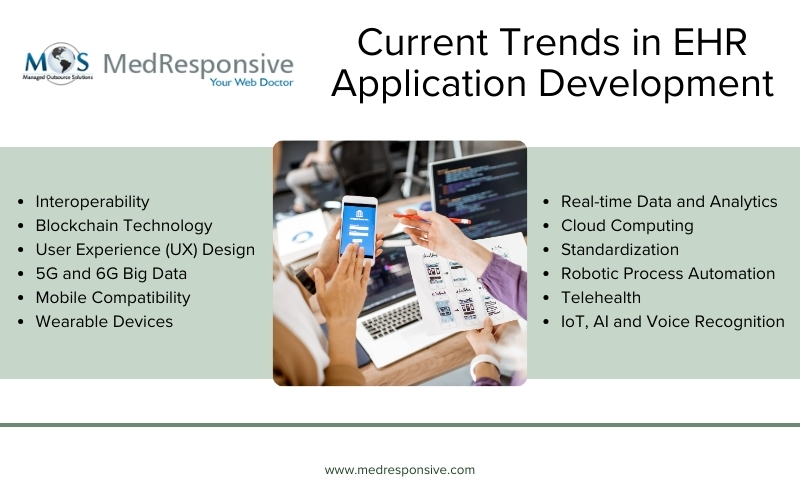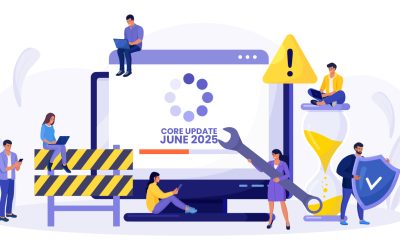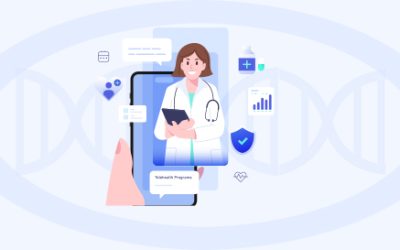EHR systems are intended to improve patient care, increase the effectiveness and quality of healthcare delivery, and facilitate communication among healthcare providers. As healthcare organizations look to the future, the buzz in EHR application development centers around creating innovative features that enhance user experience and streamline workflows within the EHR app.
Significant EHR App Development Trends
Here are some key aspects and considerations in EHR application development:
Interoperability
Interoperability has become very important in order to guarantee smooth data transfer between various healthcare systems. Fast Healthcare Interoperability Resources (FHIR) is one of the standards that has gained popularity to help improve EHR system integration and communication.
The Fast Healthcare Interoperability Resources (FHIR) standard, adopted by leading EHR systems like Epic and Cerner, facilitates seamless data exchange between different healthcare systems, allowing for improved interoperability and information sharing among providers.
User Experience (UX) Design
Gives top priority to an interface that is easy to use and allows medical professionals to navigate the system effectively. In medical workflows, intuitive design can improve usability and lower the chance of errors. Modern EHR platforms like athenahealth prioritize user-centric design, offering intuitive interfaces and mobile optimization for healthcare professionals to easily access patient records, input data, and manage workflows from various devices.
AI and Machine Learning Integration
Incorporating Artificial Intelligence and Machine Learning into EHR applications is transforming data analysis, predictive analytics, and personalized patient care, providing insights that drive more precise diagnoses and treatment plans.
For example, IBM Watson Health’s AI-powered EHR platform analyzes vast amounts of medical data to assist clinicians in diagnosing diseases, recommending treatments, and predicting patient outcomes based on historical data and medical literature.
Data Analytics and Reporting
Research, quality enhancement, and population health management can all benefit from this. EHR systems are leveraging predictive analytics to forecast potential health issues, enabling proactive interventions and personalized care plans to prevent complications. Allscripts Sunrise EHR leverages predictive analytics to identify patients at risk of readmission or complications, allowing clinicians to intervene early with personalized care plans, thereby reducing hospital readmissions.
Security and Compliance
Strong security measures will become indispensable to protect private health information. Regulatory requirements such as local data protection laws and HIPAA will have to be met to avoid data breaches. As EHR systems accumulate vast amounts of sensitive patient data, ensuring robust security measures and strict adherence to privacy regulations remains a top priority to safeguard patient information.
Mobile Compatibility
Mobile compatibility can support healthcare providers who need to access patient information on-the-go. EHR platforms are optimizing for mobile devices, allowing healthcare professionals to access patient data and records securely on smartphones or tablets, facilitating real-time decision-making and patient interactions. This makes it possible for patients also to interact with their health information.
Blockchain for Security
Block chain technology is being investigated by some developers as a potential means of improving the security and integrity of medical data. To ensure the security and privacy of sensitive medical data, block chain technology can create a decentralized, tamper-proof ledger.
Genomic and Precision Medicine Integration
Precision medicine ideas and genomic data are becoming more deeply ingrained in EHR systems. This would make it possible for medical professionals to use genetic data to create more individualized and focused treatment regimens.
Regenerative Medicine and Biometrics
Integration of regenerative medicine data and biometric information within EHRs enables tracking of patient progress in regenerative therapies and leveraging biometric data for more accurate diagnostics and treatment decisions.
Telehealth Integration
EHR systems are being developed to easily connect to telehealth platforms. This guarantees that pertinent patient information is available for use in online consultations.
EHR platforms are adapting to the growing demand for telehealth by facilitating seamless integration with remote patient monitoring and virtual care solutions, enabling comprehensive healthcare delivery from anywhere. Epic Systems for instance, offers telehealth functionality within its EHR system, enabling healthcare providers to conduct virtual visits, securely communicate with patients, and access telemedicine capabilities seamlessly integrated into the patient’s electronic health record.
Patient Engagement
Patient portals that let people make appointments, review their medical records, and securely communicate with healthcare professionals will become popular. The involvement of patients is crucial to contemporary healthcare.
Advancements in patient engagement include wearable device integrations, and instruments that enable patients to take an active role in their own healthcare management. This may result in healthcare encounters that are more individualized and patient-focused.
Transform Healthcare Delivery with Cutting-edge EHR Solutions!
EHR Application Development – Some Key Considerations
Once a suitable system is developed, it is important to create a schedule for routine updates and continuing maintenance to keep the EHR system up-to-date with new developments in technology, alterations in laws, and changes in healthcare practices. Soliciting and gathering user feedback will be vital to pinpoint areas that need improvement. To improve the EHR system according to the requirements and experiences of healthcare professionals and staff, continuous feedback loops are crucial. To ensure that healthcare personnel are able to use the EHR system efficiently, they have to be given thorough training. Create and carry out a seamless deployment strategy, taking healthcare workflow disruptions into account.
To find and fix bugs, security flaws, and usability problems, thoroughly test the system. It takes regular quality assurance procedures to deliver an EHR system that is both dependable and efficient.
Create an EHR application that is scalable to handle growing patient data volumes. Make sure you have the flexibility to adjust to changes in legal requirements and healthcare practices. Define the EHR system’s goals precisely, considering the unique requirements of healthcare providers, legal constraints, and the overarching objective of better patient care. Constant attempts should be made to enhance the usability and user experience of EHR applications by careful planning, considering user input, and iterative development. The reduction of the learning curve for healthcare professionals will continue to be a major focus of user-centric design principles.
EHR application development is probably going to be an important part of determining how healthcare information management develops in the future as technology advances and healthcare delivery models change. The goal will be to develop more patient-centered, intelligent, and interoperable solutions that enhance healthcare delivery and lead to better health outcomes. Continued advancements in artificial intelligence, machine learning, interoperability standards, and patient-centered design will drive the future of EHR application development. Moreover, the integration of emerging technologies like virtual reality (VR), augmented reality (AR), and 5G connectivity holds promising potential in enhancing EHR capabilities, patient engagement, and healthcare outcomes.
EHR developers and healthcare organizations need to remain agile and adaptive to harness these advancements, ensuring that EHR systems continue to evolve and meet the dynamic needs of modern healthcare delivery.





